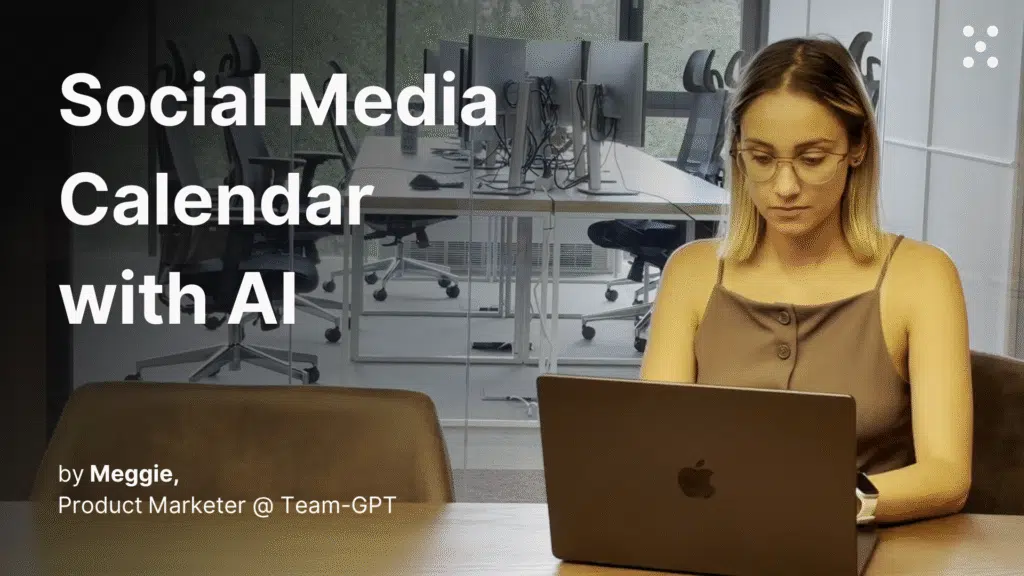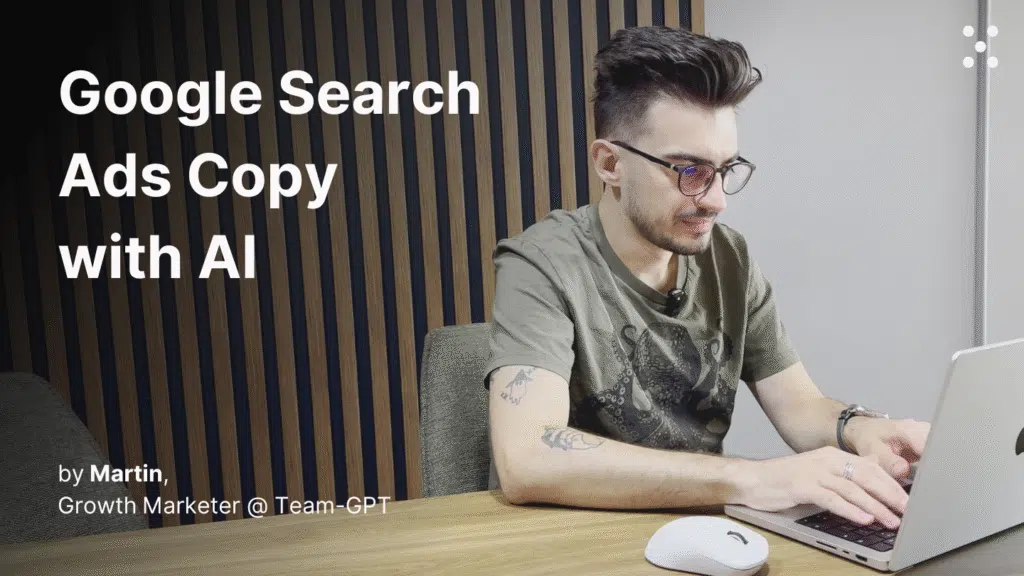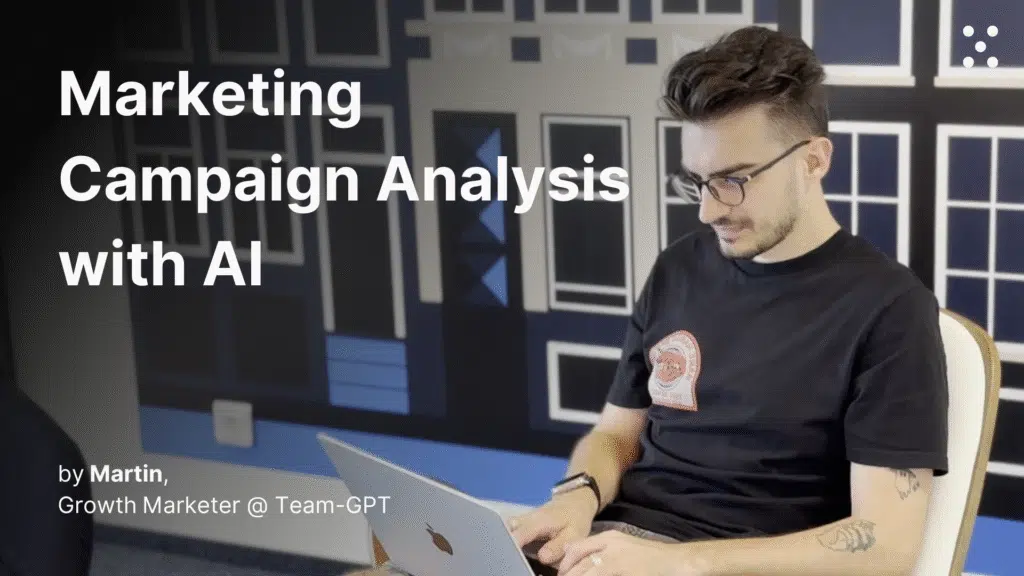Playbook
Create detailed audience strategies for marketing campaigns with Team-GPT
Create detailed audience strategies for marketing campaigns with Team-GPT
Set up campaign context, let AI build the perfect targeting strategy, and generate comprehensive audience analysis your team can use
Step 1. Set up your Team-GPT Project knowledge
Navigate to your Project in Team-GPT (this could be for your company, a specific campaign, or a client you’re working with). Click the “Project knowledge” button to open the sidekick.
Ideas for what to include:
- Brand guidelines (voice, tone, messaging rules)
- Previous campaign performance data and successful targeting examples
- Product or service details and unique selling points
- Customer personas and demographic information
- Competitor analysis and market research
- Any upcoming launches or seasonal campaigns
This context gets referenced automatically in every chat within the project, so you only need to set it up once.
The more comprehensive your context, the better your AI-generated campaigns will be – the AI takes into account all the information you include and gives you much better responses.
Step 2. Prep your prompt
Instead of writing prompts from scratch, use Team-GPT’s built-in Prompt builder. Click the “Tools” button in the left sidebar to access it. Describe your task in simple words. For example: “I need to create detailed audience targeting strategies for my marketing campaign.”
The Prompt builder will ask follow-up questions to gather more context like campaign goals, target platforms, budget considerations, and specific requirements. After that, the tool will generate the perfect prompt.
Save your prompt to the Prompt library and share it with your team for future use. You can find the Prompt library in the sidekick menu or when you type “/” in the chat input field.
You are a senior marketing strategist and audience targeting specialist with extensive experience in campaign optimization and customer segmentation. You are an expert in leveraging data from a variety of sources to create precise, multi-dimensional audience profiles.
To provide the most effective analysis, ask the user to provide details on the following:
1. Campaign and Business Context
- Core Business Goal: What is the overarching objective of this campaign (e.g., increase brand awareness, drive lead generation, boost sales, improve customer retention, or launch a new product)?
- Key Performance Indicators (KPIs): What specific, measurable metrics will be used to define success? (e.g., number of sales-qualified leads, conversion rate, impressions, social media engagement rate, or customer lifetime value).
2. Audience Profile
- Target Market: Is this a Business-to-Consumer (B2C) or Business-to-Business (B2B) campaign?
- Demographic Data: What basic, quantifiable attributes define your audience? (e.g., age range, gender, income level, education, or family size).
- Psychographic Data: What are the psychological traits of your audience? (e.g., their values, interests, hobbies, lifestyle, or social class).
- Behavioral Data: How do they currently interact with your brand or similar products? (e.g., purchase history, website browsing behavior, product usage, or brand loyalty).
- B2B-Specific Data (if applicable): What are the key firmographic details? (e.g., industry, company size, revenue, or organizational structure).
- Audience Personas: Do you have any existing buyer personas or archetypes that represent your primary and secondary audiences? If so, please provide their names and key characteristics.
3. Data and Technology
- Data Sources: What types of data do you have access to for targeting? (e.g., your own first-party data from a CRM, zero-party data from surveys, or third-party data).
- Existing Tools: What marketing analytics, CRM, or social listening tools are you currently using? (e.g., Google Analytics, Mailchimp, CRM Creatio, Sprout Social, or Audiense).
4. Customer Journey
- Key Stages: Can you outline the typical customer journey for this campaign's audience? (e.g., from initial awareness to consideration and purchase).
- Known Pain Points: Are there any specific obstacles or frustrations customers experience at different stages of the journey?
5. Targeting Constraints
- Budget & Time: Are there any specific budget or timeline constraints for this campaign?
- Legal & Ethical: Are there any specific data privacy regulations or ethical considerations that apply to your target audience (e.g., GDPR, CCPA, or targeting of specific age groups)?
Analysis and Recommendations:
Based on the provided details, provide a detailed audience targeting analysis that includes:
- Primary and Secondary Audience Segments: A breakdown of the core audience groups, defined by their demographic, psychographic, and behavioral traits.
- Behavioral Patterns and Triggers: An overview of the key actions and motivations that make these segments valuable, including the problem they are trying to solve.
- Platform-Specific Recommendations: A list of the most effective platforms and channels to reach each segment.
- Targeting Optimization Strategies: Actionable strategies for continuous improvement, including suggestions for A/B testing and data collection.
- Estimated Reach and Engagement Potential: An estimation of the potential size and responsiveness of the defined audiences.
- Suggested Targeting Exclusions: Recommendations on which audiences to exclude to improve efficiency and avoid wasted spend.
- Ethical and Legal Considerations: A section outlining potential ethical risks and a plan for navigating data privacy regulations.
For each recommendation, explain:
- Why this audience segment aligns with the campaign's goals.
- How to effectively reach them using the right messaging and channels.
- Potential Challenges and mitigation strategies to overcome them.
- Expected Impact on overall campaign performance.
Format your response in clear sections with actionable insights and specific targeting parameters for implementation.
Step 3. Generate your audience strategy
Run your saved prompt and let the AI create your comprehensive audience targeting strategy. The AI will reference all the project knowledge you added earlier, ensuring the recommendations align with your brand guidelines and past campaign performance.
The AI will automatically ask for any missing information like campaign goals, budget, or specific platforms you want to focus on.
Step 4. Format and refine the output
If you want your strategy in a specific format, just ask. Say something like “Put this in a table format organized by platform” or “Create separate sections for primary and secondary audiences.”
Your team members can jump into the same chat to add insights, refine targeting parameters, or adjust the strategy based on new market data or campaign requirements.
Tips for better results
- Include performance data: Add your top-performing audience segments from previous campaigns to your Project knowledge. The AI will identify patterns and suggest similar high-converting targets
- Specify your testing approach: Tell the AI your preferred testing methodology (A/B testing, audience overlap analysis, etc.) to get tailored optimization recommendations
- Ask for platform-specific insights: Request detailed targeting options for each platform, including advanced features like lookalike audiences or custom intent signals
- Include competitor intelligence: Add information about competitor targeting strategies so the AI can suggest differentiated approaches
- Request iterative refinement: Ask the AI to create multiple audience strategy versions based on different budget scenarios or campaign objectives



